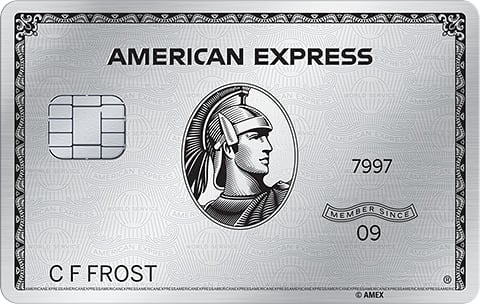How I’m Choosing Between the AmEx Platinum and Chase Sapphire Reserve
I've never had a premium travel card, but I know I'm in for a massive annual fee, a pile of perks and some homework. For me, it's less about the card's cost or value and more about its utility.

Many or all of the products on this page are from partners who compensate us when you click to or take an action on their website, but this does not influence our evaluations or ratings. Our opinions are our own.
After having a mid-priced travel credit card for years, I'm ready to upgrade to a more premium one. I’m between two heavy hitters on the market right now: the American Express Platinum Card® and the Chase Sapphire Reserve®, both of which have gone through major overhauls in 2025 that include beefed-up perks, new and updated statement credits, and — perhaps most notably — significant annual fee increases.
The American Express Platinum Card® now carries an annual fee of $895 (see rates and fees), and the Chase Sapphire Reserve® has jacked up its fee by 45% to $795. Either way, I know I'm gonna have to shell out more money for more perks.
A little bit about me: I’m not a “travel hacker” by any means. But I am ready to elevate my travel rewards game and am willing to put in the work to maximize value from my cards. And in many ways, I’m the target demographic for both the American Express Platinum Card® and Chase Sapphire Reserve® — I’m a high-income “Zillennial” with great credit. (In its 2024 annual report, American Express revealed that Millennial and Gen Z consumers were its “fastest growing age cohort in terms of both new account acquisitions and Card Member spending.”) Plus, I live in a big city, so I can hypothetically take full advantage of the cards’ credits with brands, such as Uber, Equinox and Resy, for example.
Still, much of the appeal of owning a premium card can be aspirational. And I’m concerned that getting the most value from either the American Express Platinum Card® or the Chase Sapphire Reserve® would require lifestyle changes to optimize the cards’ credits and perks.
Here are the most important factors I’m weighing as I make my decision and which card I’m leaning toward, if either.
on Chase's website
on American Express' website
Earn 125,000 bonus points after you spend $6,000 on purchases in the first 3 months from account opening.
You may be eligible for as high as 175,000 Membership Rewards® Points after you spend $8,000 in eligible purchases on your new Card in your first 6 months of Card Membership. Welcome offers vary and you may not be eligible for an offer. Terms apply. Terms apply.
8 points per dollar spent on travel bookings purchased through Chase, including flights, hotels, rental cars, cruises, activities and tours.
4 points per dollar spent on bookings made directly with an airline or hotel.
3 points per dollar spent at restaurants, including eligible food delivery.
1 point per dollar spent on all other purchases.
Through Sept. 30, 2027: 5 points per $1 spent on Lyft.
5 Membership Rewards points per dollar spent on flights booked directly with airlines or through American Express (on up to $500,000 in purchases per calendar year).
5 points per dollar on prepaid hotels booked through American Express.
1 point per dollar on all other purchases.
Terms apply (see rates and fees).
OTHER PERSPECTIVES
I’m side-eyeing the sky-high annual fees
I’ll be honest: Paying an annual fee close to $1,000 makes my stomach turn. But as far as how important the yearly cost is when choosing between these two specific cards, I’d say it's less of a deciding factor. At this level, I know what I’m getting myself into — a premium card comes at a premium cost, and the $100 difference between the two cards’ annual fees is not a make-or-break point here for me. What I am weighing more heavily is how much the cards’ statement credits can offset their annual fees.
However, as much as I’m willing to stomach the cost of either card for their premium benefits, it’s worth noting that paying an annual fee over $500 is just not feasible for many and won't make sense. There are similar premium cards on the market that charge at least $200 less than what the American Express Platinum Card® and the Chase Sapphire Reserve® do. (For example, the Capital One Venture X Rewards Credit Card has a $395 annual fee and can still provide a lot of value.)
Statement credits are a make-or-break factor
For me, as a premium card first-timer, it all comes down to how much money I can get back through the card’s perks and credits. Both the American Express Platinum Card® and the Chase Sapphire Reserve® adopt the “coupon-book” model of doling out credits incrementally, which takes effort to track and use effectively.
Let's break it down:
The American Express Platinum Card® offers more credits from brands that I already use — or would readily use — based on my lifestyle and where I live. These include a $400 Resy dining credit, a $200-a-year Uber credit, and a $300 annual digital entertainment credit for subscriptions like Paramount+, Peacock, The New York Times and more. (Enrollment required; terms apply.) Those three credits alone would offset the annual fee. And that’s before the travel-specific credits that I would actually use as an avid traveler, including $600 a year toward eligible prepaid bookings through American Express with The Hotel Collection (two-night minimum stay required) or Fine Hotels + Resorts properties; $200 annually toward incidental airline fees*; and $209 toward a CLEAR+® membership. (Enrollment required; terms apply.)
» Learn more: See the AmEx Platinum's full list of benefits here.
The credits offered through the Chase Sapphire Reserve® are more limiting for me. For instance, the card gives holders a $150 credit twice a year for "Sapphire Reserve Exclusive Tables" restaurants. But the restaurants featured there are upscale options that I rarely visit — especially compared to the more affordable options offered through Resy. (Also, I should note that Exclusive Tables only services certain major cities in the U.S., which makes it particularly limiting if you live in a smaller town or area.) Similarly, cardholders can receive up to $500 in annual credit for stays at hotels in The Edit collection, offered through Chase. But given the high price point of the properties in The Edit collection and the fact that none of the benefits there are guaranteed, that credit wouldn’t be valuable to me.
There are perks I wouldn't use on either card, or that would encourage making purchases I wouldn't normally make. This applies to AmEx Platinum credits like $200 a year toward an Oura Ring and $300 a year for Lululemon. (Enrollment required; terms apply.) Similarly, the Chase Sapphire Reserve®'s $300 StubHub credit and $120 credit toward Peloton membership wouldn’t be helpful to me.
I’m split when it comes to travel perks and rewards
Travel is a priority to me, so I’m focused on which card can get me the most travel-specific value when it comes to rewards, redemption flexibility and fancy perks.
Both cards offer airport lounge access. The American Express Platinum Card® gets you access to more than 1,500 lounges, including American Express Centurion Lounges, Delta Sky Clubs, Priority Pass Select lounges (enrollment required) and more. Terms apply. With the Chase Sapphire Reserve®, you get access to Chase's Sapphire Lounges, Priority Pass airport lounges and select Air Canada Maple Leaf Lounges.
Here, I'd lean toward American Express because it has a larger lounge footprint and also because I typically fly Delta.
Speaking of which, I’d most likely make more use of the AmEx Platinum’s transfer partners, which feature more of the airlines I fly with (I often travel abroad) and hotels that I stay with (I’m loyal to Hilton).
That being said, my main hangups here with the American Express Platinum Card® are its rewards and low redemption rate. The Chase Sapphire Reserve® offers more points for bookings made with the issuer, there’s no cap on its rewards rate on flights (not the case with its competitor), and it offers triple points on restaurant spending. The American Express Platinum Card® earns no bonus rewards for restaurant spending.
Plus, Membership Rewards points redeemed for travel through AmEx’s Travel portal are typically worth just 0.7 cent each, compared to Chase Ultimate Rewards® points, which are worth 1 to 2 cents each when redeemed through Chase’s travel portal.
» Learn more: The guide to Chase’s travel portal
» Learn more: The guide to AmEx’s travel portal
AmEx Platinum vs. Chase Sapphire Reserve®: Which card am I getting?
Based on my lifestyle and spending priorities, I’m leaning toward the American Express Platinum Card®. In addition to the practical reasons for getting it, the card’s cool factor as a status symbol is also alluring to me.
But there’s also the option of getting neither. Doing the math and mental gymnastics required just to write this article was exhausting. And actually having either card will require so much more work. Many credits offered on the American Express Platinum Card® aren’t automatic — they require enrollment. And as is the case with those offered on the Chase Sapphire Reserve®, the credits require that you closely track your spending to take full advantage of them.
Plus, none of the credits offered on either card will be “free.” I’d ultimately have to spend money (potentially more than I normally might) to make money.
*More from American Express
American Express relies on airlines to submit the correct information on airline transactions to identify incidental fee purchases. If you do not see a credit for a qualifying incidental purchase on your eligible Card after 8 weeks, simply call the number on the back of your Card. Qualifying airlines are subject to change. See terms & conditions for more details
Find the right credit card for you.
Whether you want to pay less interest or earn more rewards, the right card's out there. Just answer a few questions and we'll narrow the search for you.





